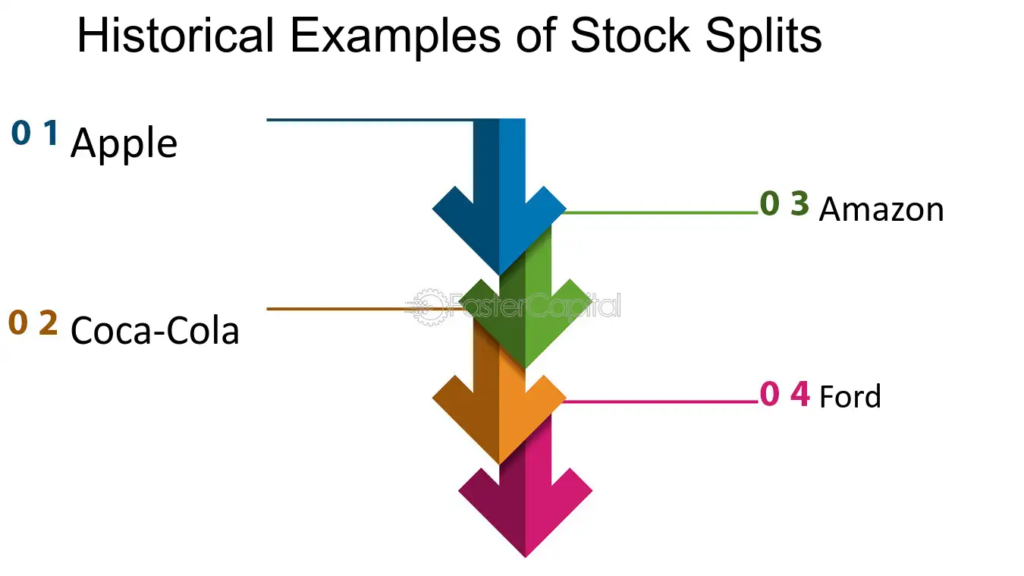In the world of investing, you might have heard the term “stock split” but might not fully understand what it entails or how it affects shareholders and companies. A stock split is a corporate action in which a company divides its existing shares into multiple new shares, increasing the number of shares outstanding while reducing the stock price proportionately. This blog will delve into the concept of stock splits, their types, reasons for executing them, and their implications for both investors and the company.
Understanding Stock Splits
A stock-split is a financial maneuver used by companies to adjust the number of shares available in the market. It is essentially a division of a company’s existing shares into multiple new shares. The primary goal of a stock-split is to make shares more affordable and accessible to a broader range of investors, especially when the stock price has risen significantly.
For example, in a 2-for-1 stock-split, a company would issue two new shares for every one existing share. Consequently, the total number of shares outstanding doubles, and the stock price is halved. If a stock was trading at $100 before the split, it would trade at $50 after the split, assuming no other market movements.

Types of Stock Splits
- Forward Stock Split
In a forward stock-split, a company increases the number of shares outstanding by issuing more shares to shareholders. Common forward splits include:
- 2-for-1 Split: Shareholders receive two shares for every share they currently own. The stock price is halved.
- 3-for-1 Split: Shareholders receive three shares for every share they currently own. The stock price is reduced to one-third of its pre-split value.
- 4-for-1 Split: Shareholders receive four shares for every share they currently own. The stock price is divided by four.
- Reverse Stock Split
A reverse stock-split involves reducing the number of shares outstanding by consolidating them into fewer shares. Common reverse splits include:
- 1-for-2 Split: Shareholders exchange two shares for one new share. The stock price doubles.
- 1-for-3 Split: Shareholders exchange three shares for one new share. The stock price triples.
- 1-for-10 Split: Shareholders exchange ten shares for one new share. The stock price increases tenfold.
Reasons for Stock Splits
Companies undertake stock-splits for various reasons, including:
- To Make Shares More Affordable
When a company’s stock price rises significantly, it may become expensive for retail investors to buy shares. A stock split reduces the share price, making it more affordable and attractive to a broader range of investors. This increased accessibility can lead to higher trading volumes and greater liquidity.
- To Increase Market Liquidity
By increasing the number of shares outstanding, a stock-split can improve market liquidity. More shares in circulation can lead to more frequent trading and tighter bid-ask spreads, enhancing the ease with which investors can buy and sell the stock.
- To Improve Market Perception
A stock split can create a positive perception among investors. A lower stock price post-split might attract more investors, potentially driving up demand and the stock price. Additionally, a stock split can be seen as a sign of confidence by the company’s management, indicating that the company is performing well and expects continued growth.

- To Align with Industry Standards
Companies in certain industries or sectors may use stock-splits to align their stock price with industry norms. For example, tech companies often have higher stock prices, and a split can bring the price closer to industry benchmarks.
- To Prevent Delisting
In some cases, companies execute reverse stock splits to avoid delisting from a stock exchange. Exchanges often have minimum share price requirements, and a reverse split can boost the stock price to meet these criteria, preventing the company’s stock from being delisted.
Implications of Stock Splits
1. Impact on Shareholders
- Ownership Proportion: Shareholders’ ownership proportion remains the same after a stock split. For example, in a 2-for-1 split, a shareholder with 100 shares will have 200 shares after the split, but their total value remains unchanged (assuming no other market movements).
- Stock Price Adjustment: The stock price adjusts proportionately to the split ratio. For instance, if the stock was trading at $100 before a 2-for-1 split, it would trade at $50 after the split. The value of a shareholder’s total investment remains unchanged, though the number of shares and their price are adjusted.
- Dividend Payments: Dividends paid per share are also adjusted in proportion to the split ratio. For example, if a company paid a $2 dividend per share before a 2-for-1 split, it would pay $1 per share after the split.
2. Impact on the Company
- Enhanced Liquidity: Increased share availability can enhance liquidity, making it easier for investors to trade the stock and potentially leading to a more efficient market.
- Perception and Investor Interest: A stock split can positively affect investor perception and interest, potentially leading to an increase in stock price due to higher demand. It signals that the company is performing well and is confident in its future prospects.
- Administrative Costs: Executing a stock split involves administrative costs and logistical considerations, such as updating stock records and notifying shareholders.
3. Impact on Stock Indices
- Index Calculation: Stock splits can affect the calculation of stock indices. Most indices, such as the S&P 500, are price-weighted, meaning that changes in stock prices due to splits can influence the index’s overall value. Index providers adjust the index divisor to account for stock splits, ensuring that the index value remains consistent and comparable.
Historical Examples of Stock Splits
- Apple Inc. (AAPL)
Apple has conducted several stock splits, including a notable 7-for-1 split in 2014 and a 4-for-1 split in 2020. These splits were aimed at making the stock more accessible to retail investors and aligning with industry standards. Apple’s stock splits were well-received and contributed to the stock’s overall performance and market perception.

- Tesla Inc. (TSLA)
Tesla executed a 5-for-1 stock split in August 2020. The split aimed to make Tesla’s stock more affordable and accessible to a broader range of investors. The stock split was followed by significant increases in Tesla’s stock price, reflecting positive market sentiment and investor interest.
A stock split is a strategic corporate action that can offer several benefits to both companies and their shareholders. By increasing the number of shares outstanding and reducing the stock price proportionately, a stock split can enhance liquidity, improve market perception, and make shares more affordable. While stock splits do not change the overall value of shareholders’ investments, they can positively influence stock performance and investor interest.
For investors, understanding stock splits is crucial for interpreting stock price movements and assessing the potential impact on their investments. As with any financial strategy, it is important to consider the broader context and long-term implications of stock splits on a company’s growth prospects and market position.
x`You might also be interested in – Key Things to Keep in Mind Before Taking a Housing Loan